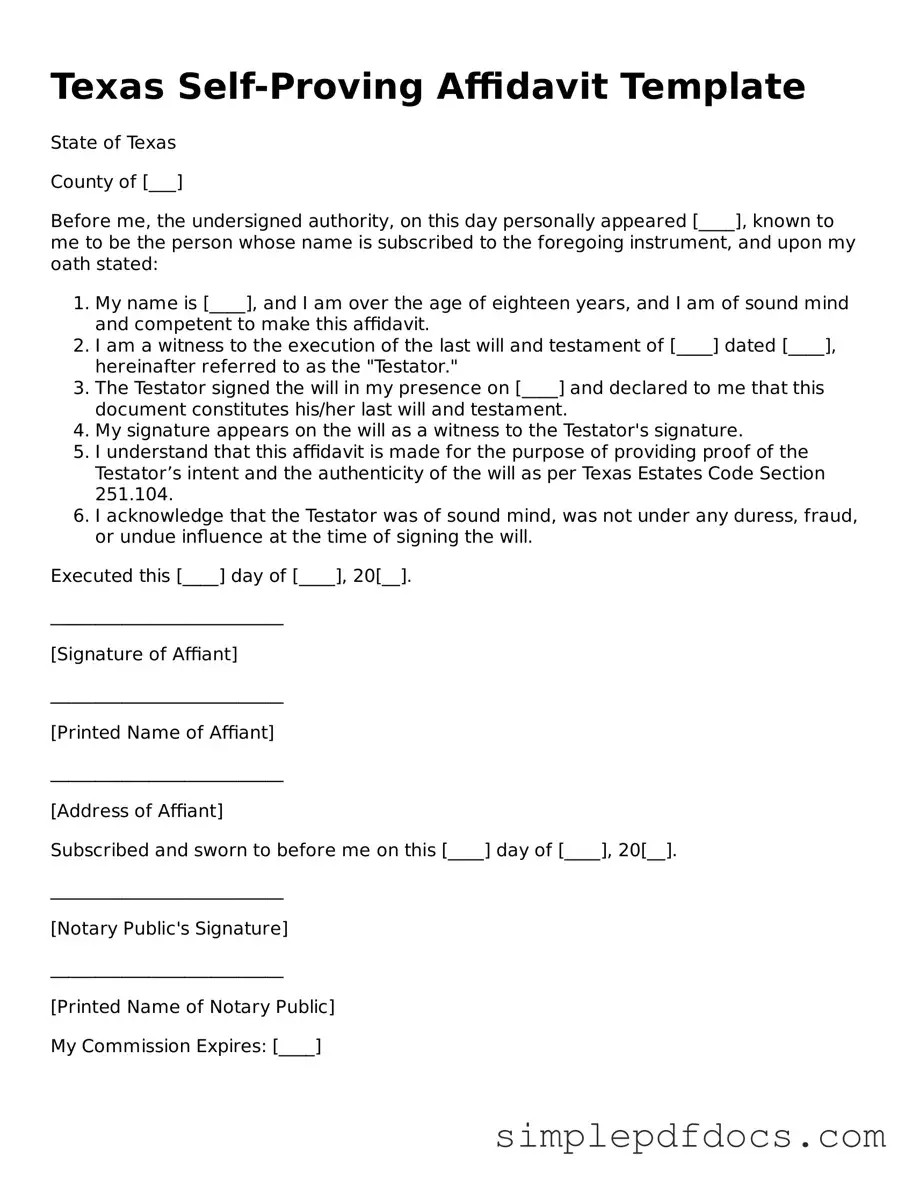Legal Self-Proving Affidavit Document for the State of Texas
The Texas Self-Proving Affidavit is a legal document that allows a testator's will to be validated without the need for witnesses to testify in court. This form simplifies the probate process by confirming that the will was signed voluntarily and in the presence of witnesses. By using this affidavit, individuals can ensure their final wishes are honored efficiently and effectively.
Get Document Here
